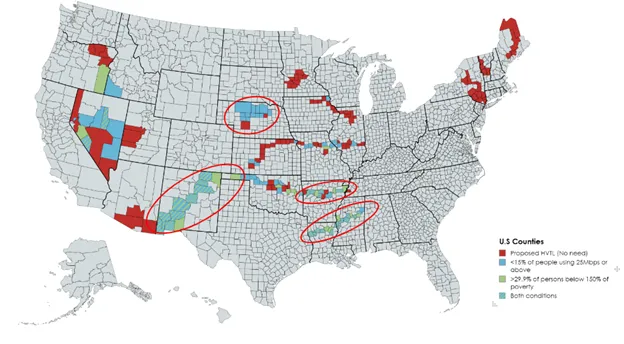Joshua Rogers is a fellow at the Great Plains Institute and RMI. This article represents his own views and not those of the Great Plains Institute or RMI.
The challenge of expanding the U.S. electric power grid to support economic development, increase grid reliability, reduce grid operating costs and reduce carbon emissions is acute. The U.S. needs 47,300 GW miles of new transmission lines by 2035 to deliver a zero-carbon grid, according to a 2023 DOE report. Princeton University’s Rapid Energy Policy Evaluation and Analysis Toolkit project goes even farther arguing for 75,000 miles by 2035. Yet, according to a Grid Strategies report, in 2023, only 55 miles of new high-voltage transmission lines were built. There are thousands of miles of transmission projects under development, but siting and permitting bottlenecks have stymied development.
Congress has failed to pass any substantial transmission reforms, except for a small rider in the Infrastructure Investment and Jobs Act. As a result, transmission advocates have relied upon actions by the Federal Energy Regulatory Commission and the Department of Energy to spur the development of long-distance and interregional high-voltage transmission lines. The new FERC Order 1920 proposes helpful new process rules to accelerate transmission development. The DOE’s proposal to expedite permitting along 3,500 miles of national interest transmission corridors, likewise, could be helpful.
However, the regulatory uncertainty arising from recent legal challenges to FERC Order 1920, state supreme court decisions and electoral outcomes, have exposed the unsustainable nature of a top-down approach. Given the U.S. Supreme Court’s recent dismantling of Chevron deference in Loper Bright v. Raimondo, the need for an alternative pathway to development has become increasingly clear. The United States will struggle to meet its electric transmission growth goals merely by updating national regulatory standards.
In this context, the case for a ground-up approach to transmission reform is not only possible, it is preferable. A bottom-up process to build support for transmission development can deliver more line miles faster at lower cost with broad popular support. Properly executed, transmission reform could contribute to one of the greatest rural revitalization programs in recent history.
Drawing from recent academic and industry calls to embrace a more grassroots approach, a new report from Princeton University, based on analyzing over 40 interviews with developers and county officials impacted by transmission development, examines incentive levers for 18 shovel-ready projects. The report also demonstrates that a bottom-up development approach could be a major way to unlock electric transmission development in the United States. There are easy, cheap and sensible steps developers can immediately take to garner local support.

Collocated benefits
High-priority and historically controversial transmission lines have untapped, cost-effective incentives at their disposal. As shown in the figure above, Pattern Energy’s Southern Spirit, Nebraska Public Power District’s R-Project and portions of Pattern Energy’s SunZia, Invenergy’s North Path and the Delta Plains Proposed NIETC, all impact counties lacking sufficient broadband access.
Though rural electric cooperatives have discovered the cost benefits of collocating transmission with broadband, the practice has not been adopted by merchant developers or utilities in a meaningful way. Yet, this small but meaningful incentive may be the difference between significant delays and strong local support.
Miscommunicated incentives
An even easier way to mobilize support at a local level, especially for counties in between points of energy generation and distribution, is to clearly articulate the benefits they stand to receive from the high-voltage transmission lines. Of the 18 shovel-ready projects analyzed, the most common and most specific benefits cited by developers were the lines’ connection with clean energy and job creation.
But neither of these perceived benefits resonated with impacted local stakeholders whose communities would not receive any direct benefit from renewable energy or job growth. In fact, a line’s connection with renewable energy may be perceived as a distinct negative. As one landowner described it, “if this [transmission line] gets built, all of the rural areas, the wildlands of these parts of Nevada would be destroyed by industrial energy sprawl.”
The one benefit that received support and even excitement among county officials in Colorado, Utah and New Mexico was the prospect of the diversified and robust tax base the line would support. Yet, of the 25 counties impacted by the TransWest Express and SunZia projects, only one had an estimate for the tax revenue they expected to receive from the line.
This worrying lack of knowledge regarding the expected benefits from transmission projects explains, at least in part, the lack of support many transmission projects have faced.
A crisis of credibility
This approach to development has created challenges for clean energy advocates which will only intensify as more development permeates rural America.
Without clear benefits that are perceived and understood by impacted communities, county officials in 5 states across the Mountain West and Southwest indicated that their rural communities, who already feel unfairly imposed upon by urban and coastal interests, will have developers in the future wishing they could return to the levels of opposition we are seeing today.
This is not to say that all developers are practicing in the past. Grid United’s cooperation with community foundations to distribute monetary grants during the permitting phase of development, for example, has shown promising results. However, as regulatory remedies continue to come up short in spurring the rate of development the United States needs to see in the next decade, finding creative and common-sense solutions to reducing local opposition must be a central tenet of transmission advocates across the country.
Correction: This opinion piece had the wrong developer for the Southern Spirit transmission line. It is Pattern Energy.





















